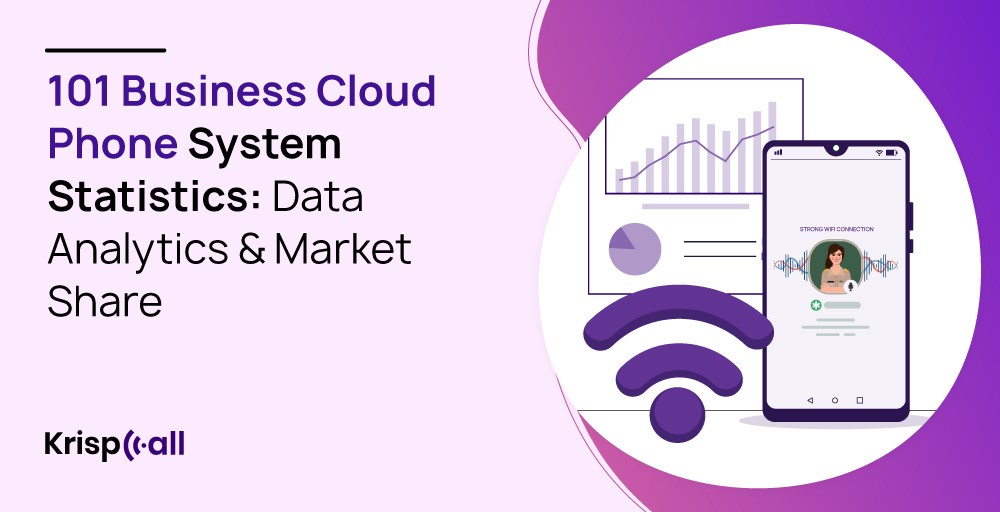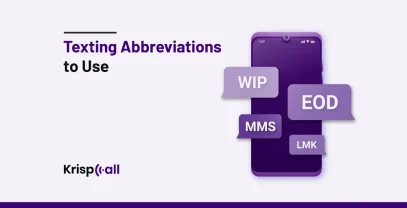Business cloud phone systems have increased in popularity in recent years. More and more businesses are switching to VoIP systems for various reasons.
Businesses are rapidly adopting cloud-based phone systems to improve communication and collaboration while reducing costs.
If you’re considering making the switch, you will probably want to know the impact of using a cloud phone.
In this blog post, we’ll give you an overview of the business cloud phone system statistics, market share, and data analytics. We’ll also provide some insights into the future of the market.
General Cloud Phone System Statistics 2024
A business cloud phone system, also known as a VoIP business phone system, uses the internet to route phone calls instead of the traditional Public Switched Telephone Network (PSTN). It is either on-premise or hosted in the cloud.
Generally speaking, modern business requires a global perspective on communication. That’s why many business companies have switched to VoIP (Voice over Internet Protocol).
Get VoIP Number for Your Business Online.
Get VoIP Phone numbers from all over the world for personal & professional use.
Select numbers :
VoIP makes it easier for companies to connect with staff members, customers, and stakeholders worldwide.
VoIP networks have been rapidly growing in use, while the commercialization of mobile networks, including 4G and 5G, has been increasing. The emergence of mobile VoIP and the expansion of internet access worldwide contribute to this trend.
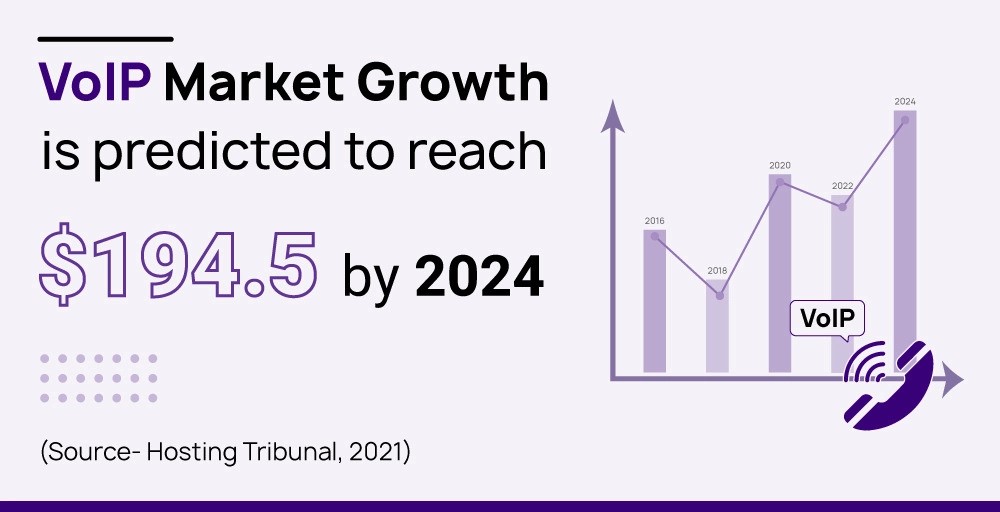
In this regard, VoIP is predicted to grow even more in the coming years. Here are some noteworthy statistics regarding VoIP software.
- The VoIP market is estimated to reach $194.5 billion by 2024. (Hosting Tribunal, 2021)
- By 2026, the global VoIP service market is predicted to increase from $85.2 billion in 2021 to around $102.5 billion with a compound annual growth rate (CAGR) of 3.8%. (Research and Markets, 2021)
- In 2021, the corporate VoIP industry was worth $68.3 billion. (Research and Markets, 2021)
- The market for VoIP services for businesses is expected to reach $83.0 billion by 2026. (Research and Markets, 2021)
- It is expected that the corporate VoIP market will rise at a compound annual growth rate of 4.0% from 2021 to 2026 (Research and Markets, 2021)
- Meanwhile, in 2021, the individual VoIP market share was worth $16.9 billion. (Research and Markets, 2021)
- The individual VoIP software market will reach $19.5 billion by 2026, a CAGR (Compound Annual Growth Rate) of 3.0%. (Research and Markets, 2021)
- VoIP services had a market value of $30 billion in 2020. (Global Market Insights, 2021)
- VoIP services are projected to have a market value of $95 billion in 2027. (Global Market Insights, 2021)
- Domestic VoIP revenue in 2020 was over $5 billion in the US. (Global Market Insights, 2021)
- It is estimated that the VoIP market will grow by 15% between 2021 and 2027. (Global Market Insights, 2021)
- By 2025, the mobile VoIP sector will be projected to grow by more than 13% worldwide. (Global Market Insights, 2020)
- Hosting IP PBX is expected to grow by 20% by 2027. (Global Market Insights, 2020)
- The Asia-Pacific region is predicted to have the largest mobile VoIP market by 2024, worth $60 billion. (Statista)
- During the period 2017-2024, computer-to-telephone VoIP is expected to grow at the fastest rate. (Persistence Market Research, 2018)
- By 2024, managed IP PBX services will grow at a CAGR of 15.3% (Persistence Market Research, 2018)
- By 2024, the hosted business IP PBX service segment is set to grow at a rate of 7.8% (Persistence Market Research, 2018)
- By 2024, long-distance VOIP is projected to generate $124 billion in revenue (Persistence Market Research, 2018)
- By 2027, the market size for mobile VoIP will be $183.7 billion (Business Wire, 2020)
- Over 80% of organizations using cloud services will have a FinOps department to automate policy-driven observability and optimization of cloud resources by 2024. (IDC, 2022)
Impact of COVID-19 on Emerging Cloud Phones: Data and Statistics
Covid-19 caused many businesses to adopt remote working protocols. Many companies worldwide use VoIP services to enable work-from-home arrangements and to collaborate in remote settings.
So, cloud phones are designed to handle surges in demand caused by the Covid-19 outbreak.
VoIP solutions allow users to make calls from portable devices like laptops, desktops, and mobile apps. By doing this, users can communicate with anyone worldwide, regardless of location. Compared to traditional phone systems, VoIP is more cost-effective.
As a result of the COVID-19 pandemic, most businesses have been forced to use remote setups, which is why VoIP services are gaining traction year after year. The following statistics will help you better understand the impact of COVID-19 on the VoIP industry.

- The number of wireless voice minutes increased by 25-30% on average for mobile network operators at the beginning of the 2020 pandemic. (Allot, 2020)
- During March 2020, Microsoft Teams had a 500% increase in calls, conferences, and meetings. (No Jitter, 2020)
- In 2025, 22% of Americans (36.2 million) will work remotely. (Upwork, 2020)
- During India’s first nationwide lockdown, VoIP chat application usage increased from 3.45 to 5.22 hours per week. (Nielsen, 2020)
- A billion minutes of meetings were recorded in Webex in April 2020, and half a billion meeting participants were registered. This is three times the average volume of the software. (PR Newswire, 2020)
- In India, mobile usage has increased by 15%-20% overall. (Allot, 2020)
- Mobile streaming also increased by 7%. (Allot, 2020)
- From January to July 2020, Indian users spent about 4.5 hours using chat VOIP applications. (Nielsen, 2020)
- During the COVID-19 pandemic, meeting applications and social media also increased by 35%. (Allot, 2020)
Adoption and usage & benefits of cloud Business Phone System Software Statistics
Businesses are increasingly switching to VoIP systems as an alternative to traditional phone systems in today’s Internet-driven society. VoIP systems communicate over the Internet by converting voice calls into packets transmitted throughout your Internet protocol network.
Using it, you can make voice calls and join video conferences from anywhere. Using a VoIP system makes it easy for you to communicate with your clients and colleagues.
Many VoIP systems today have video conferencing and call management features to enhance organizational communication. No matter what your device is, any of your contacts can receive a voice message via the VoIP app of your choice.
VoIP solutions are becoming increasingly popular among businesses for their productivity-enhancing and cost-saving features. The following are some recent VoIP adoption statistics based on various sources.
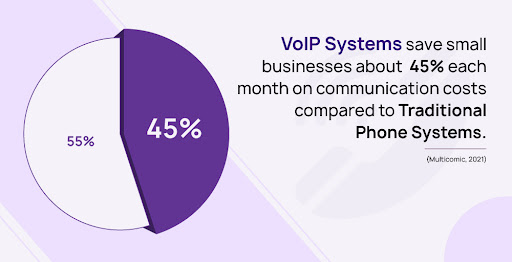
- 31% of businesses rely on a VoIP system in their organization. (Multicominc, 2021)
- The average savings businesses saw after switching to VoIP was 50%-75%. (Multicominc, 2021)
- Up to 30% of conference expenses can be reduced with web conferencing and VoIP apps with integrated voice features. (Multicomic, 2021)
- VoIP systems save small businesses about 45% each month on communication costs compared to traditional phone systems. (Multicomic, 2021)
- Dell has saved $39.5 million through telecommuting and decreased its carbon footprint. (Multicom, 2021)
- Over 100% of Australians used Zoom by 2020. (Allot, 2020)
- Typically, VoIP systems cost between $20 and $30 per user per month. (Tech.co, 2021)
- Due to the silence suppression feature of VoIP technology, users can save data since 50% of an audio conversation is silent. (Tech.co, 2021)
- VoIP solutions will replace traditional phone systems in 61% of cases. (Hosting Tribunal, 2021)
- Globally, there were approximately 204.8 billion VoIP users by 2020. (Hosting Tribunal, 2021)
- As much as 50% of telecom costs can be saved when companies use VoIP. (Hosting Tribunal, 2021)
- 62% of contact centers use self-service speech or interactive voice response (IVR) platforms to provide customer service. (Forrester)
- Having a telephone conversation or meeting in person is an effective way to resolve first-contact issues. In general, 75.3% of problems are addressed on the first contact. The rate for leaders is 85%. (NTT, 2020)
- A small business with a telephone can reach out to customers more effectively. In fact, 71% of consumers find it most convenient to speak with small businesses by telephone. (Podium, 2021)
- The conference call feature is one of the top VoIP features cited as increasing productivity by 65% of small businesses. (Startupanz.com, 2020)
- By 2025, 95% of customer interactions with AI chatbots will likely be conducted over the phone. By using them, organizations can improve their telephony processes. (Startupanz.com, 2020)
- With a VoIP solution, 67% of employees find phone calls to be much easier to handle. (Spectrumvoip, 2020)
- According to the latest productivity statistics, VoIP features improve small businesses’ productivity by 77%. (CISCO, 2021)
- VoIP was dominated by Android, which was worth $90 billion in 2020. (Wisdomplexus, 2020)
Cloud Phone System Cost & Saving Statistics
Cloud phones are a godsend to companies trying to reduce operational costs. Businesses can use VoIP services to connect with clients, staff, and stakeholders without compromising their budget. Since the number doesn’t lie, let’s see the cloud phone system cost and saving statistics.

- 82% of businesses report cost savings after moving to the cloud. (Microsoft)
- After switching to the cloud, 94% of businesses experienced a security improvement. (Salesforce)
- The cost of cloud telephony is predicted to drop between 3% and 5% annually, which means businesses can save money. (Tech.co, 2021)
- A VoIP system can accommodate calls anywhere, increasing productivity by up to 20%. (Harbor Networks)
- Integrated voice and online conferencing capabilities result in a 30% reduction in teleconference expenses. (Harbor Networks)
- Softphones, which allow you to make calls over VOIP using a computer, can save businesses $1,727 per month. (Harbor Networks)
- Using a VoIP system can save you 32 minutes per day on average. (Cisco, 2007)
- A company that uses VoIP can save up to 75% on communication costs. (BullsEye Telecom, 2019)
- Businesses with 30 users can save $1,200 per month with VOIP technology. (Harbor Networks)
- By switching from traditional phone service to VoIP, small businesses can save 40% on local calls. (Tech.co, 2015)
- Small businesses that switched to VoIP phone service saved 90% on international calls. (Tech.co, 2015)
- VOIP reduces startup costs by 90% for small businesses. (Tech.co, 2015)
Business Cloud Phone System & Technology Statistics
Cloud Phone Systems can still be made even more successful with continued effort. With newer technological advancements, VoIP usage, market share, and revenues are rapidly growing.
Hence, it’s imperative to understand how these innovations can be integrated into your current workflow to maximize your investment. However, don’t rely solely on technology.
5G networks and artificial intelligence are just two of the trends shaping VoIP’s future. Contact center operations and web conferencing can be improved with the advent of VoIP technologies.
A. Adoption of AI in VoIP services
A VoIP system that integrates artificial intelligence enables businesses to manage customer support and contact centers more efficiently. An AI system, for example, identifies an agent based on a caller’s personality, mood, and call history. It reduces human intervention so that you save time and can perform more productive tasks daily.
AI also enhances VoIP web conferencing by providing speech recognition and real-time language translation. Your business can serve diverse customers from across the globe with AI-enhanced web conferencing tools.
These are some recent statistics on AI adoption in VoIP:
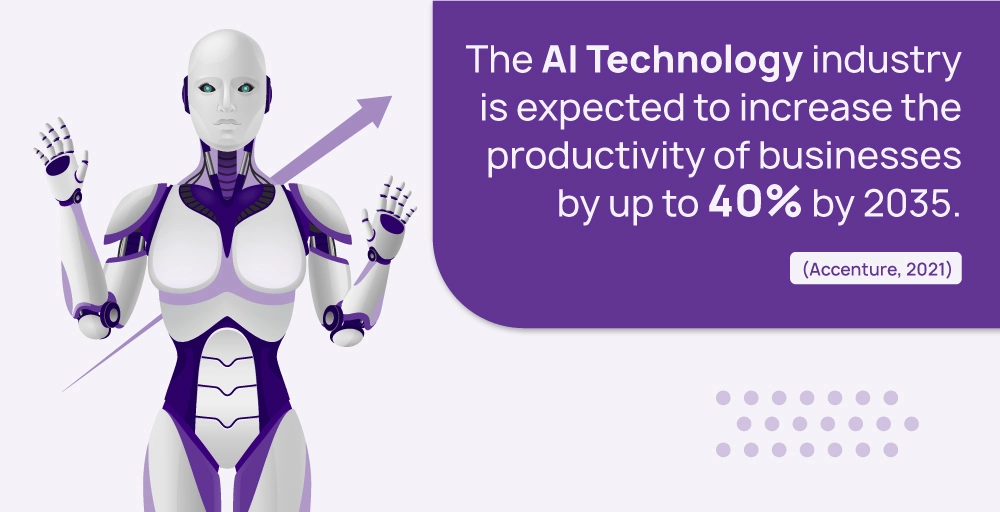
- By 2025, artificial intelligence will drive 95% of all customer interactions. (Nextiva, 2021)
- 8 out of 10 businesses already used Artificial Intelligence in customer service in 2020. (Oracle, 2020)
- Almost 40 percent of teens regularly use AI-enabled voice search tools like Cortana, Siri, and Alexa. (Nextiva, 2021)
- The AI technology industry is expected to increase the productivity of businesses by up to 40% by 2035. (Accenture, 2021)
B. Adoption of 5G networks in VoIP services
There will always be a mention of 5G technology when talking about VoIP software statistics. Compared with 4G or older networks, 5G offers better response times and lower network latency, resulting in higher-quality voice and video calls. The reliability of 5G networks has made VoIP services the global standard.
The 5G network also facilitates smoother connections by reducing delay and enhancing user experience. The 5G network can now send and receive 4K and 8K resolution videos because it provides sufficient data transfer speeds. Furthermore, web conferences can be held with more participants, which is perfect for businesses that frequently host video meetings with many participants.
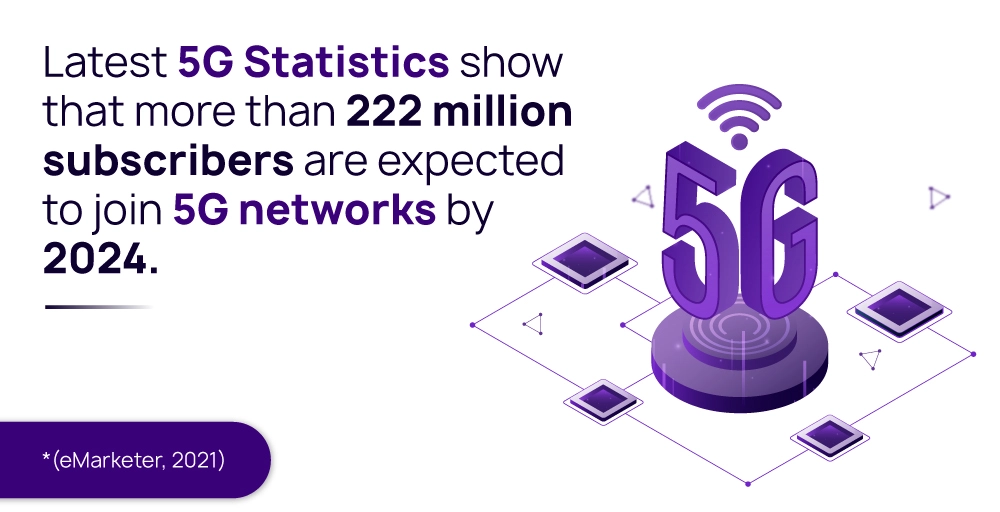
The following statistics illustrate 5G networks adoption in the VoIP industry:
- Among leading 5G networks, South Korea is predicted to have the highest share, with 73% of mobile connections by 2025. (GSMA, 2021)
- The US and Japan follow next, with each having a 68% share of the 5G mobile market. (GSMA, 2021)
- Latest 5G statistics show that more than 222 million subscribers are expected to join 5G networks by 2024. (eMarketer, 2021)
- At the same time, there will be a decline in 4G subscriptions, falling to 154 million in 2024 from 313 million in 2019. (eMarketer, 2021)
- A total of 73 operators in 41 nations have launched a 3GPP-compliant 5G service (containing 66 mobile and 35 fixed wireless access), compared with 63 operators in 35 countries in March 2020. (GSA, 2020)
- VoIP in education is expected to grow at a CAGR of 12% until 2025. Seminars and class collaborations are made possible through softphone applications and IP phones. (VoIP Review, 2019)
Cloud Business Phone System Challenges Statistics
Like every other thing, cloud business phones have positive and negative sides. Businesses in various industries increasingly embrace VoIP, but users still face several challenges. Challenges are primarily regarding complexity, security, and overall reliability.
A. Complexity
Some users may take time to get comfortable with new applications due to technological advances. That’s why some users might find it frustrating to use VoIP systems.
Certain managers will need to learn new technical terms in the workspace and gain expertise in managing VoIP systems. The system must be easy to use to be user-friendly.
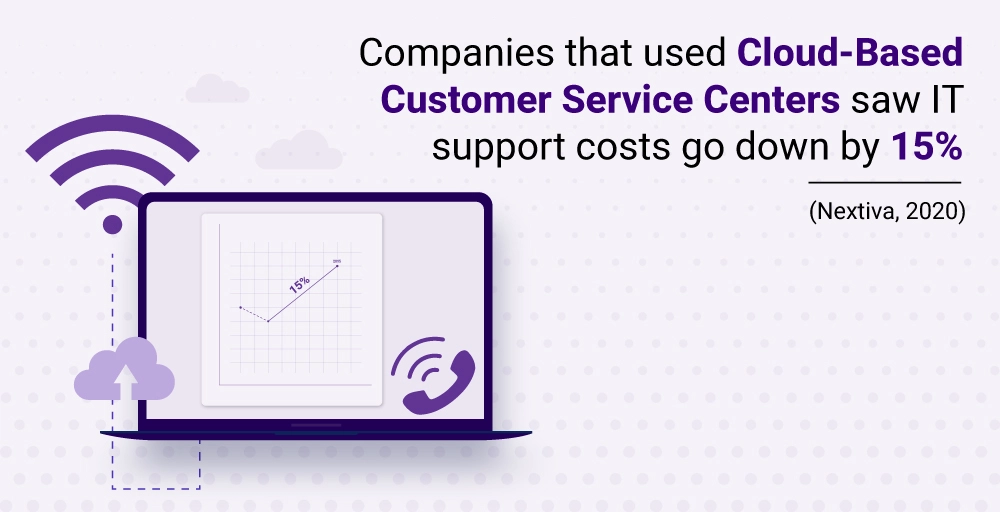
- 83% of businesses lose customers because of poor communication. (Nextiva, 2020)
- Companies that used cloud-based customer service centers saw IT support costs go down by 15%. (Nextiva, 2020)
- In online meetings, 85% of participants encounter software problems. (Cisco, 2007)
- 61% of millennials say they prefer to communicate with businesses or brands via text. (Interactions, 2019)
- 75% of millennials dislike making or receiving phone calls because they are time-consuming. (BankMyCell, 2021)
- It is rare for CEOs to conduct phone conferences unless they are necessary. In fact, 61% of their time is spent on face-to-face interactions and only 15% on phone calls. (Harvard Business Review, 2018)
B. Security
Another challenge that the VoIP system confronts is that it might not be as safe as a traditional telephone system. Using the internet to transmit calls makes communication cheap. But since it sends data over the internet through multiple servers, it can lead your online business to potential cybersecurity risks and data breach issues.
So, to protect your VoIP system and your customers’ information, you must reinforce it with the security measures provided by top cybersecurity vendors.
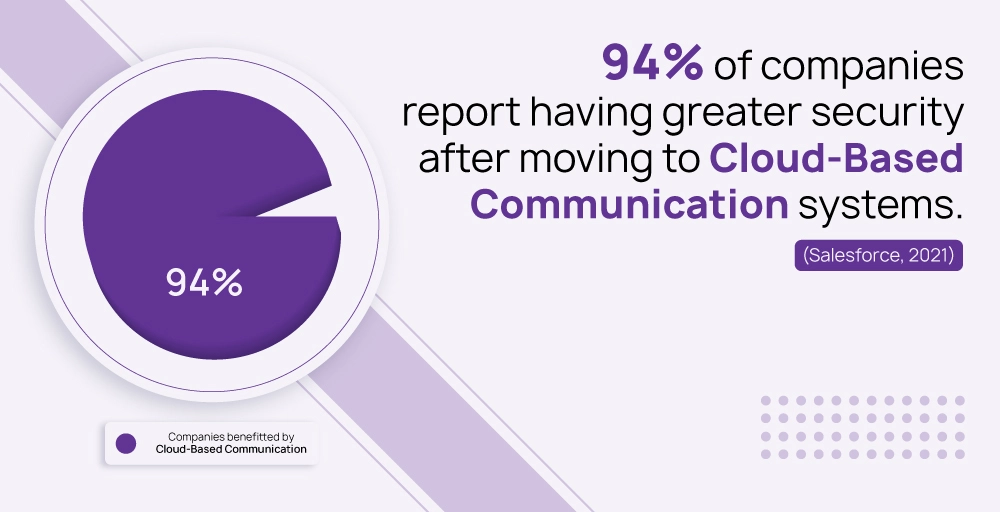
The statistics below illustrate security as one of VoIP’s biggest problems.
- Approximately 46% of illegal calls are made using VoIP. (VoipReview.org, 2019)
- The total cost of toll fraud is estimated to be $28 billion. (No Jitter, 2019).
- It is estimated that 38% of small businesses don’t have cyber security protocols in place for dealing with cyber threats. (International Federation of Accountants, 2019)
- 82% of breaches caused by hackers involved Human Elements, including Social Attacks, Errors, and Misuse. (Verizon, 2021)
- Over the past 12 months, 68.4 million Americans have become victims of phone scams. (Truecaller, 2022)
- Around 25 percent of Wi-Fi hotspots aren’t encrypted or secure. (Salesforce, 2021)
- 94% of companies report having greater security after moving to cloud-based communication systems. (Salesforce, 2021)
- Brazil has the highest spam rate, with 32.9 spam calls/month/user. (For 4 years in a row). (Truecaller, 2021)
- Social Security scams are the most common government-related scams. In total, $1,500 was lost by the victims. (Federal Trade Commission)
- According to newly released data, approximately 58% more consumers reported losing money to fraud in 2021 than the previous year. (Federal Trade Commission, 2021)
- Consumers reported over 2.8 million fraud incidents last year to the FTC, with imposter scams again topping the list and online shopping scams coming in second. (Federal Trade Commission, 2021)
- More than two in three (18% of 18-34-year-olds) report losing money due to scam calls, while less than half (45%) of those over 55 report losing money. (First Orion, 2022)
- 42% of respondents have reported receiving financial scam calls this year. ((First Orion, 2022)
C. Reliability
Statistics on VoIP reliability show that these systems vary greatly in technical competence and quality of service. Using a VoIP platform that is not reliable could lead to packet loss, which could result in long emails and choppy phone conversations.
Nevertheless, a VoIP solution with effective remote bandwidth management tools will deliver reliable, high-quality professional calls.
- In an effort to resolve an issue, 86% of users consult three to five communication channels. (McKinsey, 2020)
- A mobile phone is used by 88% of people at least once per week for work communication. (Nextiva, 2020)
- 48% of business professionals have increased their use of video conferencing over the past two years. (Nextiva, 2020)
D. Customer Support
Increasingly, shoppers are choosing self-service VoIP options for customer support. Generally speaking, not all customers prefer to deal with agents when solving product or service issues. This means it might be a good time to invest in both VoIP and unified communications systems that can support multiple channels.
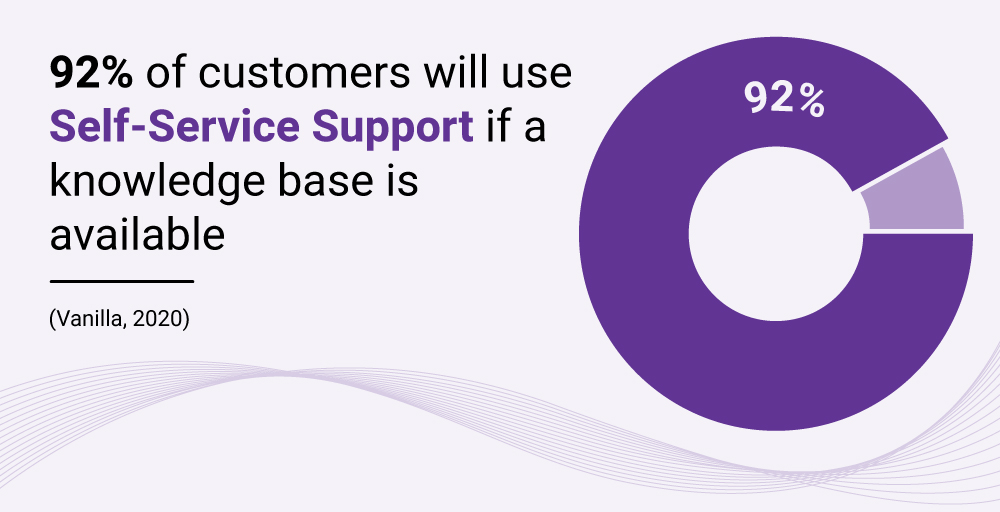
- Self-service support is expected by 79% of consumers. (Vanilla, 2020)
- 92% of customers will use self-service support if a knowledge base is available. (Vanilla, 2020)
- A bot can deal with 80 percent of customer interactions. (Accenture, 2016)
- Agent-led telephone remains one of the most common support channels, with 88.2% of organizations providing it currently. (NTT, 2020)
- Business communication problems cost 33% of companies a customer. (Nextiva, 2020)
- Poor customer service accounts for 63% of customers leaving a brand. (Microsoft Dynamics 365, 2018)
Business phone systems face some other challenges:
- A peak of 32.239 million residential VoIP subscribers was reached in December 2013. (Federal Communications Commission, 2021)
- Nevertheless, the number has steadily decreased since then. The number of residential VoIP subscribers had been reduced to 29.793 million by June 2019. (Federal Communications Commission, 2021)
- Globally, there were 8.648 billion mobile subscriptions in 2021. (Statista, 2021)
Future and Predictions of Cloud Phone Systems in 2024
VoIP software statistics suggest that fixed and landline telephone services will become extinct in the future, which is not surprising. It’s evident from the numbers above that VoIP services have become the standard of communication in this digital age.
VoIP offers tangible business benefits. VoIP can be a cost-effective option for small businesses as an alternative to traditional phone systems. The technology can also optimize large corporations’ business call handling and sales performance.
However, VoIP services’ challenges might drop the public’s attention towards them. But VoIP companies are expected to devote more resources to securing networks in 2024. By doing this, businesses can continue safeguarding and serving their customers without encountering any issues.
Many businesses use new communication strategies, such as mobile devices, smart assistants, and video chats. In the coming years, VoIP may be the standard technology for business communications. As with any modern technology, these systems continue to evolve. Disruptive technologies such as 5G networks, UCaaS, AI, and WebRTC will likely change the industry in a few years.
Conclusion
Nowadays, many new communication channels can serve several purposes simultaneously. A VoIP solution might be the most cost-efficient alternative to a landline phone system or expensive PBX installation for your business. VoIP systems typically offer video, voice, SMS, and instant messaging.
I hope this business cloud phone system statistics helped you understand how to adapt to the industry’s tectonic shifts more effectively.

